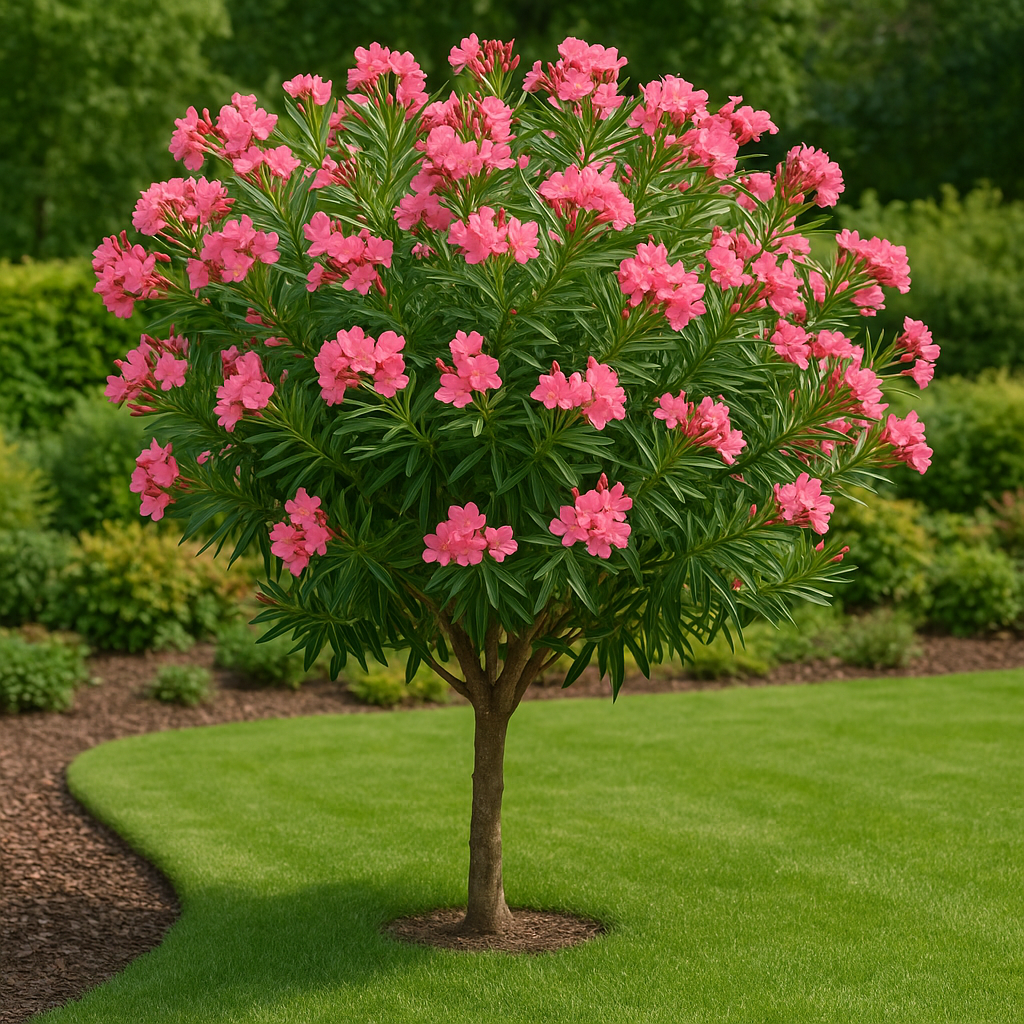Oleander (Nerium oleander) is a stunning ornamental shrub admired for its vibrant flowers and resilience in hot climates. Whether grown in gardens, public spaces, or as a hedge, oleander adds undeniable beauty to any landscape. However, what many people don’t realize is that every part of the oleander plant is highly toxic to humans and animals.
In this guide, we’ll explore 7 essential precautions to grow oleander safely, allowing you to enjoy its beauty without compromising safety.
1. Choose a Strategic Location in Your Garden
The first step in growing this plant safely is to choose the right planting location. It should be placed away from high-traffic areas such as entryways, playgrounds, or any place where children or pets frequently roam.
It thrives in full sun with good air circulation, so choose a spot that provides at least 6 hours of sunlight daily. Keep a distance of 5 feet (1.5 meters) from other plants to allow it to grow freely without unwanted contact. Avoid planting it near edible plants to prevent accidental contamination.
2. Always Wear Protective Gear When Handling
Oleander’s milky sap can cause skin irritation, eye inflammation, and allergic reactions. When pruning, transplanting, or handling any part of the plant, always wear thick gardening gloves and, ideally, protective eyewear.
Avoid touching your face, eyes, or mouth during handling. Once finished, wash your hands, tools, and any clothing that may have come in contact with the plant to prevent accidental exposure.
3. Prune Safely and Responsibly
Pruning oleander is necessary to maintain its shape, encourage flowering, and remove dead or damaged branches. However, this process also increases the release of toxic sap.
Safe pruning tips:
-
Use sharp pruning shears to minimize sap splatter.
-
Perform pruning in dry weather, preferably in the morning.
-
Collect and dispose of all cuttings immediately so pets or wildlife cannot access them.
-
Never burn oleander trimmings, as the smoke is toxic and can cause serious respiratory problems.
4. Prevent Accidental Ingestion by Children and Pets
Oleander contains cardiac glycosides, toxic compounds that directly affect heart function. Ingesting even a small amount can be life-threatening.
To prevent accidents:
-
Teach children to recognize the plant and understand that it’s dangerous.
-
Use barriers, tall planters, or fencing to limit access for pets.
-
Avoid planting oleander in public spaces or shared gardens where you cannot control access.
5. Dispose of Plant Waste Properly
Improper disposal of oleander leaves, flowers, or branches can pose a serious risk. The safest method is to place all plant waste in sealed plastic bags and dispose of it through municipal green waste collection or landfill services.
Do not compost oleander waste, as the toxins remain active and can contaminate the entire compost batch.
6. Be Extra Cautious During the Flowering Season
This plant blooms abundantly in spring and summer, making it even more appealing to curious hands. During this time, it’s important to take extra precautions to ensure that children, pets, and visitors keep a safe distance from it.
-
Increase supervision of children and pets.
-
Reinforce awareness that the plant should not be touched.
-
Take the opportunity to educate neighbors or visitors about the risks associated with oleander.
7. Keep Emergency Information Accessible
Despite all precautions, accidents can still happen. Always keep local poison control center contacts and emergency numbers accessible.
If ingestion or eye/mouth contact is suspected:
-
Do not induce vomiting.
-
Rinse the affected area with plenty of running water.
-
Seek medical attention immediately.
-
Provide the plant’s name (Nerium oleander) to the healthcare provider for quick identification.
Final Thoughts
Oleander is one of the most beautiful and hardy ornamental shrubs, adding vibrant color and elegance to gardens worldwide. But its beauty comes with responsibility. By following these 7 safety precautions, you can enjoy its striking flowers without putting your family, neighbors, or pets at risk.
A safe garden is a beautiful garden — and understanding the plants you grow is the first step in responsible gardening.

Original Homi Hand Hoe – Traditional Handmade Korean Garden Tool for Weeding, Digging & Planting
Upgrade your gardening experience with this forged steel tool and elegant chestnut and acacia wood handle. Perfect for precise weeding, digging, and planting.
How to Identify Poisonous Plants: 10 Traits
Learn the key traits that can help you recognize poisonous plants and keep your family, pets, and garden safe.

